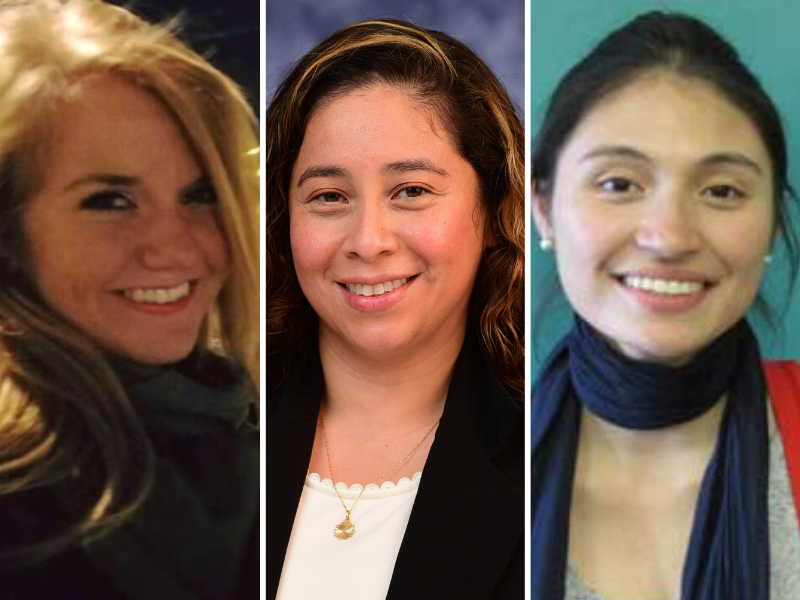Classwork collaboration leads to publication

Public health and tropical medicine doctoral students are encouraged to submit papers for publication in academic journals. Two tropical medicine students, however, recently stretched beyond their field to collaborate with a doctoral student in the School of Science and Engineering’s Math Department on research that is getting serious attention.
In March, tropical medicine doctoral candidates Alyssa Young and Kerlly Bernabé found themselves in a math-based disease modeling course taught by Dr. James Mac Hyman (who has since retired). They collaborated with math doctoral student Daniela Flórez Pineda on a class project that ultimately coalesced into an academic study published in Tropical Medicine and Infectious Disease, entitled “Modeling Sustained Transmission of Wolbachia among Anopheles Mosquitoes: Implications for Malaria Control in Haiti.”
That research was recently featured in Malaria World, a publication that aggregates the best research on the topic of malaria.
For Young and Bernabé, it was an opportunity to stretch their mathematical wings.
“When I heard that there would be not only one semester, but two semesters that you could focus on working with an actual mathematician, who understood that extra layer of the epidemiology time, what we're modeling, then, there was just no better match than that for Alyssa and I to want to learn from someone who has that background,” Bernabé said.
Young, who had spent three years working in Haiti doing malaria research, saw an opportunity within the course to model malaria prevention through Wolbachia introduction. Wolbachia virus has been shown to hinder mosquitos’ ability to spread malaria. Young wondered if the math would support intentionally introducing it into a small, specific regional area to lower spread of malaria among humans?
The other students helped Young refine and implement the idea, and Hyman recognized the potential of the project and encouraged further development towards publication.
Bernabé appreciated his encouragement. “This is a question that other mathematicians are probably thinking over, epidemiologists are thinking of, and you need that guidance when you're a PhD student. Folks who are already experts in their field can tell you, ‘You know what, that's a really good question for you to try to answer.”
Even better, the question had a compelling answer: the data supported the proposed program, which, while being expensive to implement, would likely have a decided return on investment due to Haiti’s demographics.
“Haiti is a country where the malaria transmission is extremely focalized to one or two specific regions -- very small areas,” Young said. “Practically, it makes sense. This is actually an environment where if this were to be done, it's in an elimination phase, or in terms of the degree of transmission, it can be easily targeted.”
The study provided potential groundwork for practical implementation, the kind of math-based problem-solving that could be applied to a real-world issue of malaria spread.
The research even points to further-reaching implications, such as addressing the spread of disease in other environments or addressing the spread via other methods.
“Our current model focuses only on mosquito transmission within their own species population, but we can certainly extend that to be able to create a second model that looks at human transmission,” Bernabé said.
“So if you did introduce this intervention, and let's say, you know, X percent of the population is using mosquito nets, or these other things are going on, how would it actually affect disease, malaria transmission amongst humans?” Young wonders. “And that's really the question that you probably would ultimately ask: What would be the impact if we actually did it amongst the human population?”
There’s more room for the research to grow, and Flórez is now implementing it into her doctoral dissertation. But one thing is abundantly clear: this research has the potential to help people, and that is an exciting prospect for all.
“Coming from a very theoretical background, being able to interact with, listen carefully, and actually learn a lot about the vector-borne disease details -- like all the biology behind it, all the features about mosquito species -- I feel like having that additional background really, really helped me to expand my skills,” Flórez said. “Because, yeah, I feel like it's very important for mathematicians to work more on applications to the stuff we do. And it's very satisfying to know that all the things that you do every day have an application, and you can actually help people. I was very, very grateful for that.”
